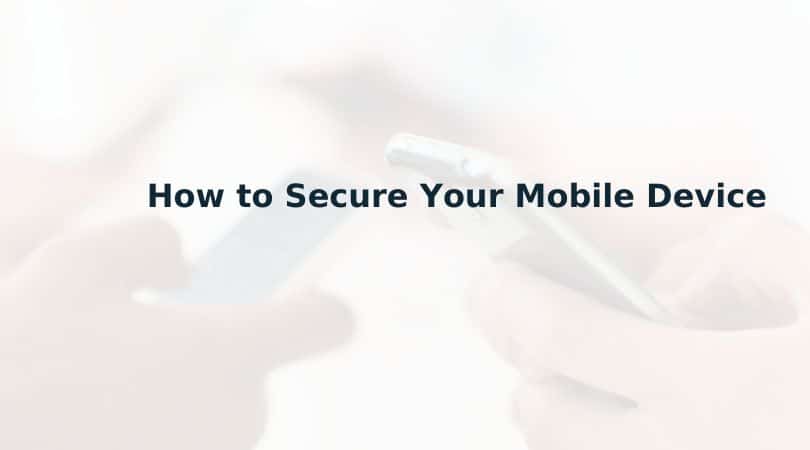In today’s world, much of our communication for personal and work is done on a mobile device. Our world today is very convenient for work and personal on-the-go! But with convenience and innovation always comes increased cybersecurity risk (yes, we know we sound like broken records).
Mobile devices are highly vulnerable to online threats and physical attacks because of their portable nature. Security threats might include mobile-specific malware, spyware, phishing, unauthorized access, and theft.
We’re guessing you have a mobile device–and we’re pretty certain you use it for personal and work-related functions. So, do you know how to keep your device (and your work on that device) secure?
Let’s dive in as we share a few key ways to keep your mobile device safe and secure!
How Do I Know My iPhone is Secure?
Let’s start with the iPhone since many people use them. Did you know there is an easy way to ensure your iPhone is secure? Meet the iPhone’s “Safety Check” feature.
Here’s how it works:
To access Safety Check, go to Settings > Privacy & Security > Safety Check. Note: If you donʼt have access to Safety Check or are having trouble using the feature, you can manually adjust your sharing settings and access your device and accounts.
How Do I Know If My Android Is Secure?
Same idea with Android phones. To check if your Android is secure, open your phone’s Settings app. Tap Security. At the top, you’ll see the security status of your device and Google Account. A warning message will appear if there are important actions to take to secure your device or accounts. Take these actions right away.
On Android phones, you can also determine if your phone has been hacked or if there is a virus on your phone. To check for malware, run an antivirus scan. Once you’ve done this and determined you do not have a virus, you can purchase antivirus software specifically for your Android phone.
8 Tips to Secure Your Mobile Device
For all you non-iPhone users, as well as iPhone users, a few simple tips will help keep any mobile device more secure. As your on-the-go “computer” in many senses, it’s important to follow a few rules for optimal security for your phone.
- Use strong passwords to open your phone and apps, including biometrics (fingerprint or Face ID) or multi-factor authentication.
- Never access sensitive accounts or apps on public (non-password protected) or free Wi-Fi (i.e., banking apps) while on public or free Wi-Fi.
- Always keep your device updated with the latest software.
- Back up the data on your mobile device to a computer frequently.
- Be wary of clicking suspicious emails or texts from your mobile device.
- Avoid using the autofill function, especially for credit card information. Some websites and apps automatically fill in your username when you visit them. This is called the autofill feature–turn this off on all apps.
- Log out of apps when you’re not using them, especially if you have financial apps (i.e., banking apps) on your phone.
- Enable tracking on your device in case you lose it. For Apple, this function is called Find My iPhone; for Android, it’s called Find My Device. This will help you follow your device if it ever goes missing.
Does Mobile Device Security Matter?
Yes! In fact, mobile device security matters now more than ever. As the nation’s workforce has become increasingly remote, many individuals perform work and sensitive data functions from their mobile devices.
If you are an organization, make sure your employees are following basic steps to secure their mobile devices, especially if they are accessing company emails or other accounts from their mobile devices.
Questions about cybersecurity or specifically securing mobile devices within your organization? We’re here to help. Contact Clarity Technology Group here.
